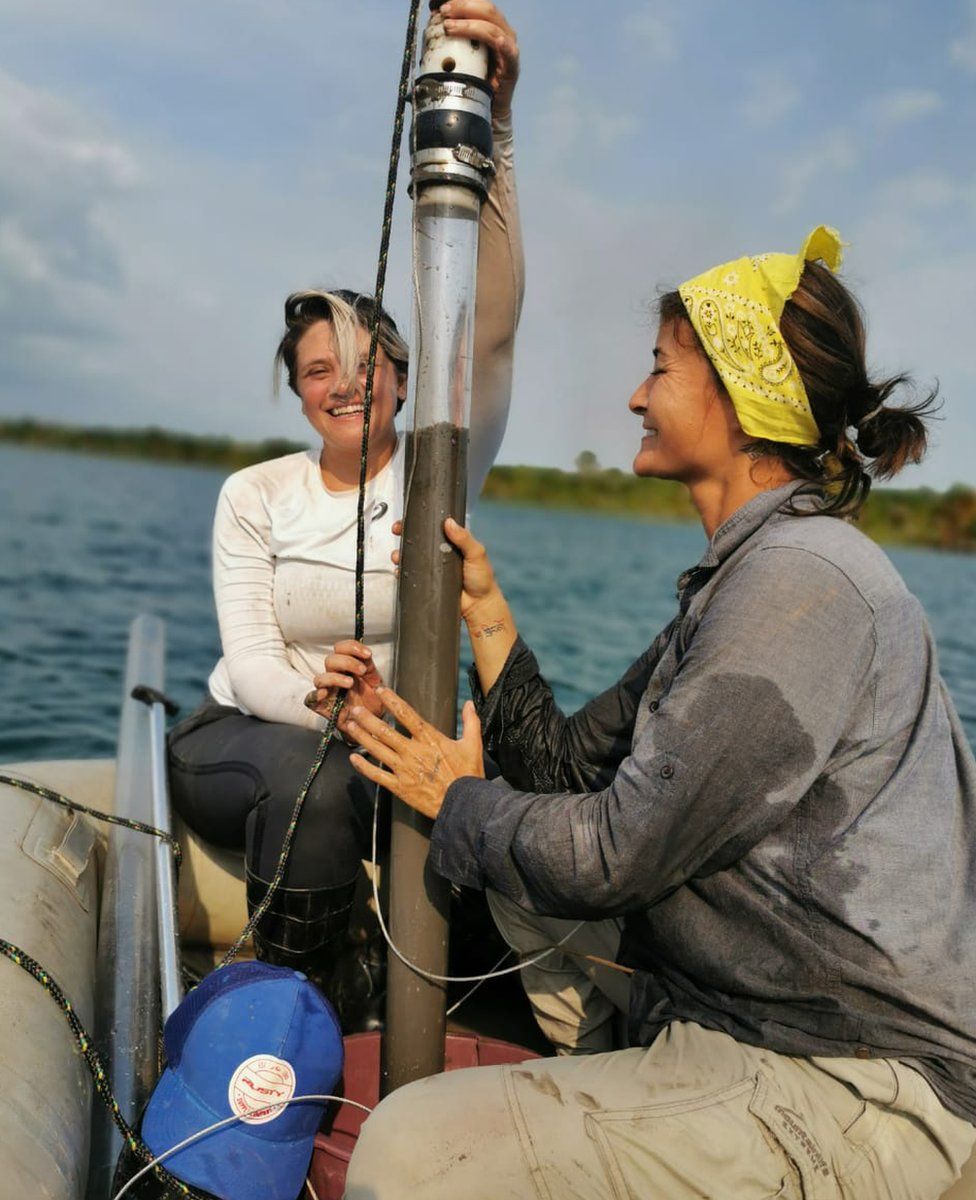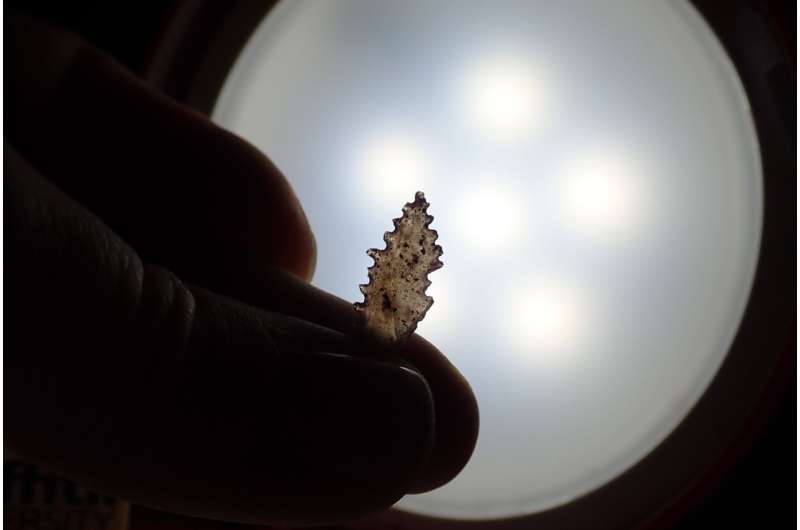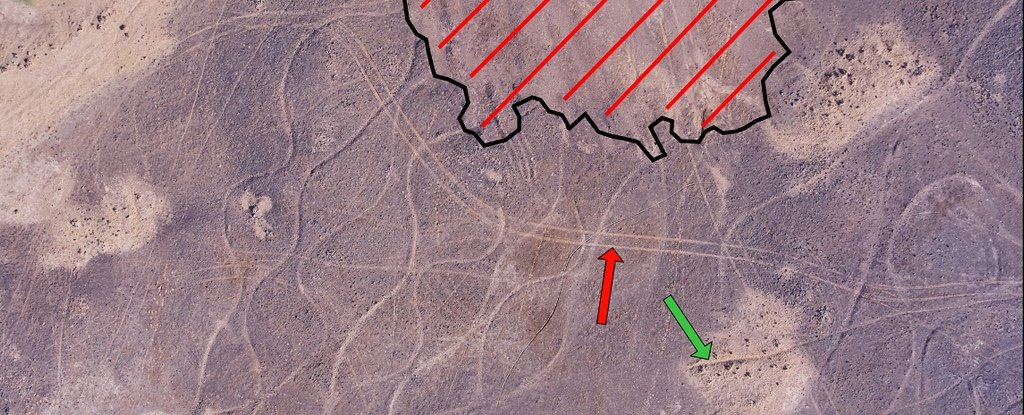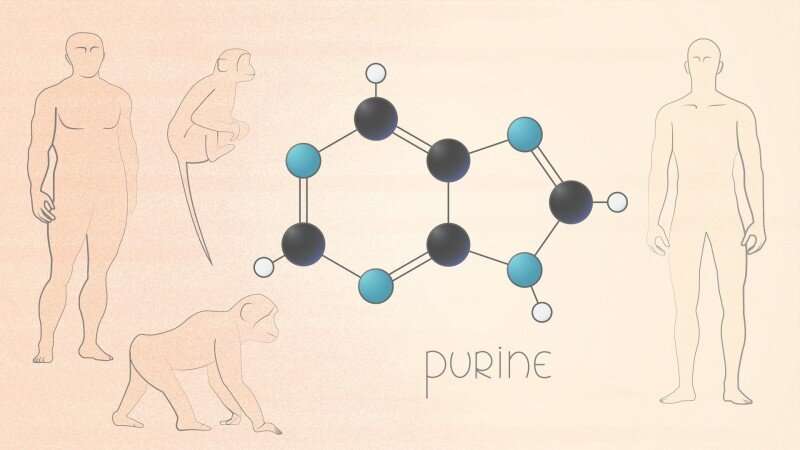Ancient news stories

Delicate prehistoric carvings of adult red deer, thought to be the oldest of their type in the UK, have been found in a tomb in one of Scotland’s most famous neolithic sites.

The center of the Milky Way is a strange and wild place. There dwells our galactic nucleus – a supermassive black hole 4 million times the mass of the Sun, a beast named Sgr A*. It’s probably the most extreme environment in our galaxy, dominated by Sgr A*’s gravitational and magnetic fields.

A burial mound in northern Syria has been identified by researchers as perhaps the world’s oldest known war memorial.

Scientists have been uncorking long, thin cylinders of soil from wetlands and riverbeds in an attempt to look back in time and understand the impact humans have had on nature. The results have made them radically rethink previous assumptions about when this started.

Some of the first modern humans to settle in East Asia more than 40,000 years ago ranged across the vast northern China Plateau for thousands of years, where they hunted red deer and may have encountered Neanderthals and other archaic humans.

TWO seemingly disparate scientific disciplines have been drawn into each other’s orbits, set on a collision course.

New research has questioned theories that a mysterious group of hunter-gatherers from Indonesia interacted with Aboriginal Australians thousands of years ago and provides a basis for future understanding of the people who made tiny, but precise implements out of stone.

Hidden in the vast, arid expanses of India’s Thar Desert lie mysterious old drawings carved into the land. These newly discovered designs are of such immense scale, they were likely never able to be glimpsed in their entirety by those who made them, researchers say.

Skoltech scientists and their colleagues from Germany and the United States have analyzed the metabolomes of humans, chimpanzees, and macaques in muscle, kidney, and three different brain regions.

Researchers from the University of Copenhagen have investigated what happened to a specific kind of plasma—the first matter ever to be present—during the first microsecond of the Big Bang. Their findings provide a piece of the puzzle to the evolution of the universe, as we know it today.

Here’s a mystery: Ancient fossils show animals originating from South America in the Antilles islands off Central America, but how did they get over the sea? The answer is via land masses that have long since sunk from view under the ocean, according to a new study.

About 250 tombs, some with fancy layouts and hieroglyphics, have been discovered cut into a hill at Al-Hamidiyah cemetery to the east of Sohag, in Egypt’s Eastern Desert, about 240 miles (386 kilometers) southeast of Cairo, Egypt’s antiquities ministry said.

Important research on Stonehenge could be put in jeopardy if the threatened closure of one of the UK’s most renowned university archaeology departments goes ahead, leading experts on the prehistoric monument have warned.

A new study of ancient DNA from horse fossils found in North America and Eurasia shows that horse populations on the two continents remained connected through the Bering Land Bridge, moving back and forth and interbreeding multiple times over hundreds of thousands of years.

The birth of a star is a wild and magnificent thing….It’s not a process we’re likely ever going to be able to observe from start to finish – but an absolutely spectacular simulation brings us closer than we’ve ever been.

Scientists have pinpointed major changes in Europe’s Neanderthal populations – from traces of blood and excrement they left behind in a Spanish cave 100,000 years ago.








